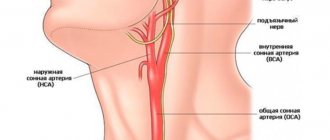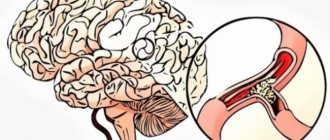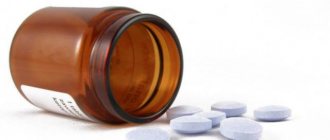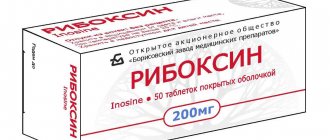One of the clinical forms of coronary heart disease is angina. A sign of angina pectoris is attacks of pain in the chest due to ischemia of the heart muscle (insufficient blood circulation).
Angina has several forms of the disease, but we will look at stable angina, when pain occurs with a certain frequency and pattern.
If the pain changes its character, becomes more pronounced and occurs with less exertion, this is a sign of progressive angina, which is a very dangerous condition that leads to myocardial infarction.
The goal of physiotherapy for the diagnosis of angina pectoris in the active phase of the disease is to achieve stabilization and regression of the process, in the inactive phase - relief of the syndrome.
Physiotherapy for cardiovascular diseases
aimed at restoring the functional state of the heart, improving coronary circulation and myocardial contractility, its excitability and automaticity; improving the functions of auxiliary (extracardiac) circulatory mechanisms by reducing the increased tone of peripheral arteries and veins, general peripheral vascular resistance, which allows increasing the throughput of the heart with a more economical consumption of oxygen; improvement of blood microcirculation and its function in transporting oxygen; improving the functions of the central and autonomic nervous system, neuroendocrine and immune processes underlying a number of cardiovascular diseases. Physiotherapy methods are used for coronary heart disease, hypertension, neurocirculatory dystonia, myocardial cardiosclerosis, etc.
Contraindications: progressive (unstable) angina pectoris, circulatory failure above stage IIB, cardiac asthma, prognostically unfavorable heart rhythm disturbances (frequent group extrasystole, frequent difficult-to-control paroxysmal cardiac arrhythmias), aneurysm of the heart and blood vessels.
Treatment at home
Everyone with a diagnosis should know whether angina can be cured using traditional methods. For this, popular medicinal plants, tinctures, herbs and even ordinary products that can be found on the market (not in a supermarket in sealed packaging) are used.
Treatment at home can improve the effectiveness of drug treatment. At home, the patient must follow the doctor’s orders and follow all rules for taking medications and behavior.
What treatment medications should I take at home?
- Antiplatelet is Acetylsalicylic acid, which prevents the formation of blood clots and helps get rid of them at an early stage of formation.
- Beds - Atorvastatin, help reduce cholesterol.
- Beta-blockers – Bisaprolol, Metaprolol.
- Calcium antagonists - Verapamil drugs minimize myocardial oxygen consumption.
- Nitrates – Nitroglycerin, Isosorbide, which reduce the load on the heart and, therefore, prevent further attacks.
Advice! Taking medications prescribed by a doctor is mandatory. But besides this, you can independently prepare folk remedies for maintenance treatment.
Traditional methods for angina pectoris
Folk remedies are used in the form of tinctures, decoctions, drops, and teas. Among medicinal plants, herbs, fruits, you can use adonis herb, walnut, St. John's wort tincture, hawthorn fruits, motherwort and many others. Let us examine in more detail the recipes for preparing traditional medicines:
- Hawthorn berries in the amount of 5 spoons are placed in a jar and filled with boiled water. Leave for 24 hours, then take three glasses before meals. This will relieve symptoms of nervous exhaustion and increase the level of vitamin C in the patient’s body.
- Eat 100g of potato juice or raw potatoes once a day - this normalizes the functioning of the digestive system and has a beneficial effect on the cardiovascular system. This recipe is indicated for many diseases, especially rheumatism, extrasystole, and hypertension.
- Mix lemon juice, honey, aloe leaves and leave for a week in the refrigerator. Take one spoon before meals. Divide treatment into 4 courses per year.
Advice! The use of any traditional method must be agreed with a doctor, since there may be allergic reactions or an overdose of any elements, which will complicate the course of the underlying disease.
Diet and exercise therapy for angina pectoris
Compliance with proper nutrition and physical activity is an extremely necessary measure for angina pectoris. First you need to eliminate fatty foods and foods high in carbohydrates. This is due to their high cholesterol content, which is deposited on blood vessels in the form of plaques, which provokes the main cause of angina - atherosclerosis.
For effective treatment, you need to exclude the following foods: dairy, butter, cream, lard, fatty meat, liver. Also minimize sugary water, confectionery, sweet fruits, honey, ice cream and white bread. Add the following foods: lean poultry and meat, seafood, cereals, nuts, low-fat dairy products, fresh vegetables and fruits.
Daily meals should contain green vegetables, legumes, dairy products, fish, meat, brown bread and plenty of water. It is best to coordinate the menu for angina pectoris with a nutritionist and your attending physician, who better know the body’s needs.
Advice! Smoking and drinking alcoholic beverages in cases of cardiovascular disease increases the risk of sudden death due to cardiac arrest several times and makes treatment ineffective.
Treatment of angina pectoris is a long and difficult process, which, with the patient’s responsible attitude, can significantly improve the quality of life and prolong it. Much depends on the patient’s lifestyle, compliance with all prevention rules, and emotional stability. The doctor’s task is to guide the patient to recovery, showing all possible options, both in a hospital setting and at home, but under the supervision of a doctor.
Physiotherapy for nonspecific respiratory diseases
is aimed at eliminating inflammation, achieving faster resorption of the inflammatory focus, preventing the transition of an acute inflammatory process to a chronic one, improving the function of external respiration, conductivity, lymph and blood circulation of the bronchopulmonary system, restoring impaired immune status, providing a hyposensitizing effect, training thermal adaptation mechanisms.
Contraindications
severe intoxication, body temperature above 38°C, stage II-III heart failure, pulmonary hemorrhage and hemoptysis, thromboembolism, infarction-pneumonia, pneumothorax, suspicion of a neoplasm, the presence of other general contraindications for physiotherapy.
Physiotherapy for diseases of the nervous system.
As a rule, in the treatment of neurological diseases, both local and segmental and general effects of physical factors are used. For example, local exposure (ultrasound, exercise therapy, massage, electrical stimulation, mud therapy, etc.) accelerates the regeneration of nerve fibers, protects the nerve from ischemia and edema, and improves the motor function of the limb.
With segmental exposure, in addition to the direct effect on the lesion (injuries and diseases of the spinal cord, the condition after removal of a benign tumor, cyst, etc.), compensatory capabilities develop by including intact but previously inactivated nerve structures of the damaged limb, which leads to an improvement in spinal blood circulation and motor neuron activity.
By using baths, heliotherapy, and climatotherapy, the overall effect of physical factors on the body is achieved. In this case, afferent signaling (stimuli), specific to a particular effect, arrives in a continuous flow from the peripheral parts to the central nervous system. Complex treatment affects not only the local focus, but also the cortical and subcortical-stem level, causing a number of vasomotor-hormonal changes (mediators, hormones).
Due to the extensive impact of physiotherapy on various processes and functions of the body, physical treatment methods are widely used in neurology for preventive, therapeutic and rehabilitation purposes. For example, the use of physiotherapy in the initial stages of insufficiency of blood supply to the brain or dyscirculatory encephalopathy helps prevent the development of more serious manifestations of vascular insufficiency of the brain.
Interested in making an appointment with a physiotherapist?
Book an appointment with a physical therapist at a time that suits you and improve your health.
MAKE AN APPOINTMENT
Gravity therapy
A new, priority direction of physiotherapy. The basis of the method is the complex effect of increased gravity and dosed physical activity on the lower limbs.
The procedure is carried out in a special centrifuge. Under the influence of centrifugal forces, blood from the upper part of the body is mixed into the pelvic area, abdominal cavity, and lower extremities. To normalize the outflow of venous blood, during the procedure the patient does light leg exercises on a simulator installed on a centrifuge.
Redistribution of blood mass activates blood circulation, accelerates metabolism and tissue regeneration. Increases the concentration of drugs that are used to eliminate foci of infection in the pelvis, lower extremities, and abdominal cavity.
The duration of one course of physiotherapy for atherosclerosis of the lower extremities is 10-14 days. Procedures are done daily, each lasting from 10 to 30 minutes.
Physiotherapy for urological diseases
Patients with pyelonephritis are prescribed amplipulse therapy; Microwave therapy; UZ; UHF therapy; direct current treatment.
Physiotherapy is contraindicated in
with primary and secondary pyelonephritis in the phase of active inflammation; terminal stage of chronic pyelonephritis; polycystic kidney disease; decompensated hydronephrosis.
Microwave therapy is contraindicated in
coral kidney stones, renal pelvis and caliceal stones. Patients with acute cystitis are prescribed: UHF therapy; irradiation of the bladder area with an infrared radiation lamp;
Contraindications to physiotherapy in patients with cystitis are:
Prostate adenoma stage II-III;
urethral stricture and bladder neck sclerosis requiring surgical intervention; the presence of stones and foreign bodies in the bladder; leukoplakia of the bladder; ulcerative cystitis. When a stone is located in the ureter at any level, the following are sequentially used: HF therapy (inductothermy); amplipulse therapy. Complex physiotherapy is not indicated for: stones more than 10 mm in diameter; acute pyelonephritis; significant anatomical and functional changes in the kidneys and ureter on the affected side; cicatricial narrowing of the ureter below the location of the stone.
When treating patients with chronic prostatitis, the following are used: ultrasound; amplipulse therapy; laser radiation; low frequency magnetic field; electric fields UHF and microwave.
Contraindications to the use of physiotherapy
acute inflammatory diseases of the rectum and prostate gland; rectal polyposis; anal fissures; acute hemorrhoids; prostate adenoma. When prescribing ultrasound, prostate adenoma is not considered a contraindication.
Interested in making an appointment with a physiotherapist?
Book an appointment with a physical therapist at a time that suits you and improve your health.
MAKE AN APPOINTMENT
Physiotherapy for gynecological diseases.
In gynecology, physiotherapy is used for the purpose of hemostasis, regulation of the menstrual cycle, elimination of vegetative-vascular disorders, elimination (reduction) of the inflammatory process, pain, adhesions, and to prevent complications after operations. In the absence of urgent indications, the optimal time for the first physiotherapeutic procedure is the 5th-7th days of the menstrual cycle, when negative general and focal responses of the body are least likely; It is advisable to carry out the procedures daily, because less frequent impacts are less effective.
Basic rules for performing physical procedures
- Only one general procedure is allowed per the total number of procedures should be no more than three. Local procedures precede the general procedure;
- procedures with opposite effects cannot be combined on the same day, for example, after heat treatment - cryotherapy;
- do not prescribe more than one procedure per reflexogenic zone;
- do not combine the effects of physiotherapeutic factors with acupuncture on the same area;
- factors with similar effects (darsonvalization and ultratonotherapy) are not prescribed on the same day and to the same area;
- do not prescribe physiotherapeutic procedures on the same day as complex diagnostic tests;
- It is imperative to take into account that physiotherapeutic procedures can enhance the effect of certain medications and adjust the dose of the drug.
- when performing physical procedures, it is necessary to take into account a combination of physical factors;
- It is possible to repeat a course of physical treatment 1 to 6 months after the previous course, depending on the physical factor used, the individual characteristics of the patient and the type of disease.
UFO in children
Ultraviolet irradiation is indicated for children from birth; it is actively used in newborns to combat jaundice in the maternity hospital.
Indications for the use of ultraviolet radiation are navel diseases, pyoderma, hypercalcemia, if the fontanel is small or closed from birth, pathologies of the upper respiratory tract, bronchitis and pneumonia. Contraindications refer to general contraindications for all physiotherapy procedures. UV irradiation is not prescribed if a child’s hemoglobin decreases below 60 g/l.
Sinusoidally modulated currents are tolerated by children starting from 3 months. It is most often used for the purpose of electrical stimulation for cerebral palsy, hip dysplasia (quite common in infants), and muscle hypotonia.
Even in the presence of irreversible changes, the early use of physiotherapy in combination with educational and other measures helps the child adapt to life thanks to the greater compensatory capabilities of the growing body.
Symptoms and causes of angina
Pain localized behind the sternum is a sign of angina. This pain appears as if inside the chest and spreads in all directions. Sometimes pain can be noticed to the left of the sternum, in the left shoulder area, under the left shoulder blade and even in the upper abdomen.
The pain is intense in its severity, burning, baking, pressing and squeezing, and is often accompanied by the fear of death.
An attack of angina pectoris does not last long - from 1 to 15 minutes and goes away after taking medications within 3 minutes, and if the pain lasts longer than 15 minutes, then you need to call a doctor for emergency help, since such an attack can transform into a myocardial infarction.
Angina is caused by insufficient blood supply (ischemia) to the myocardium (heart muscle). In turn, the cause of ischemia is the presence of atherosclerotic plaques in the vessels.











